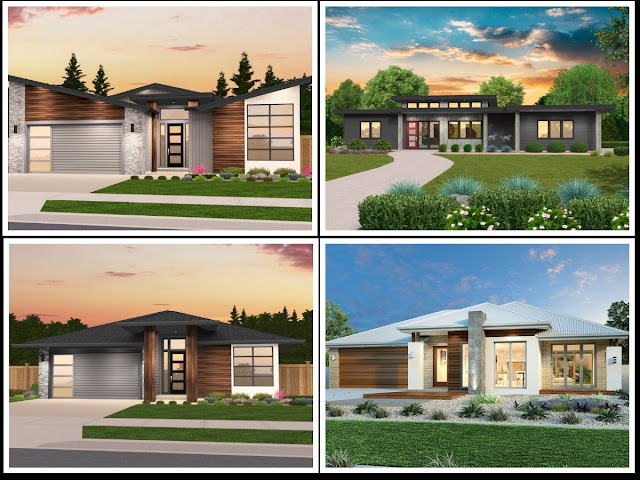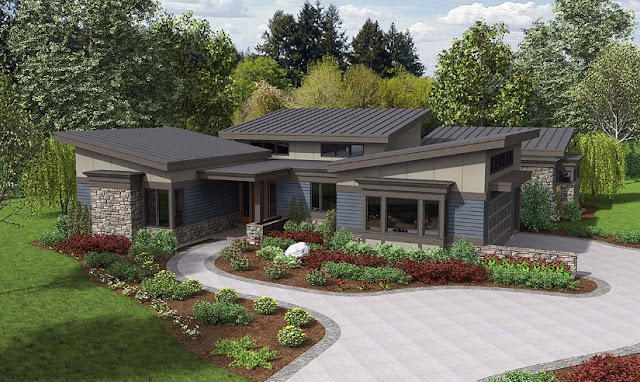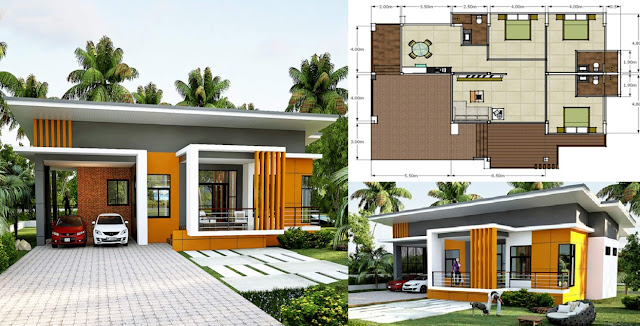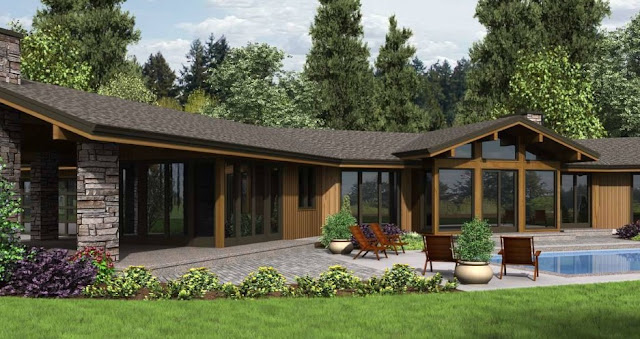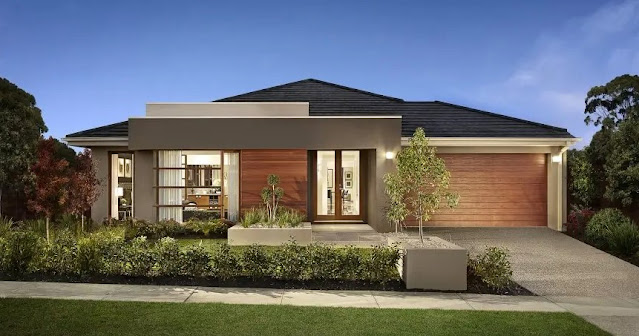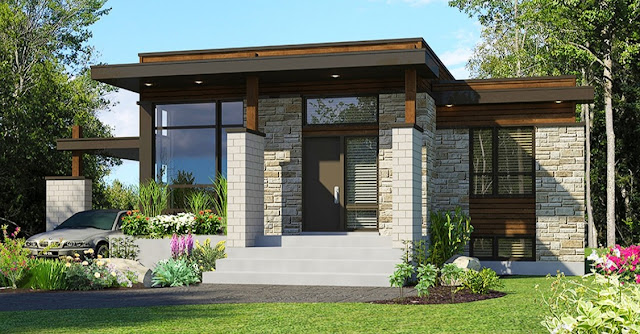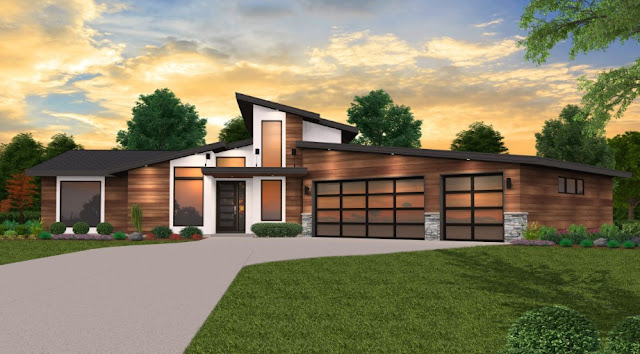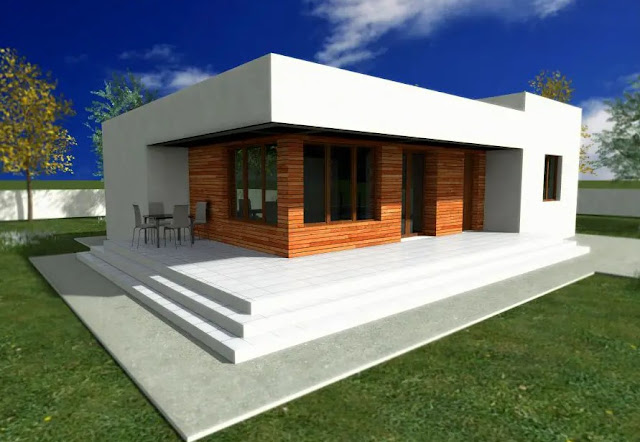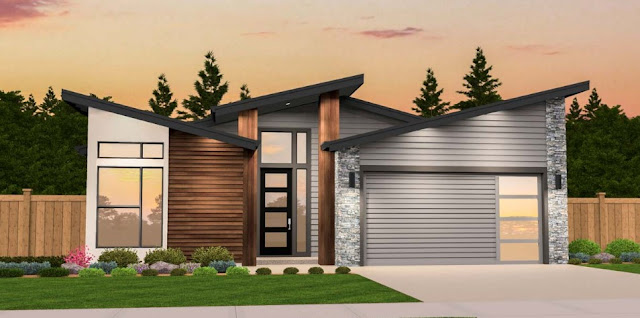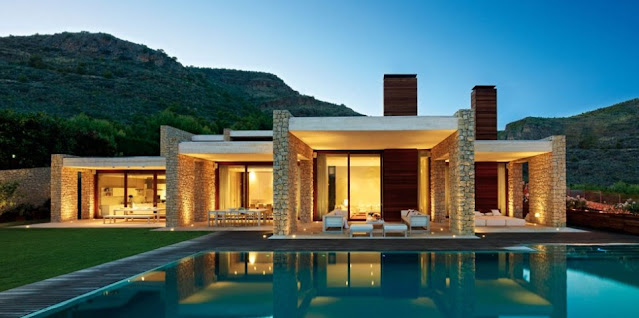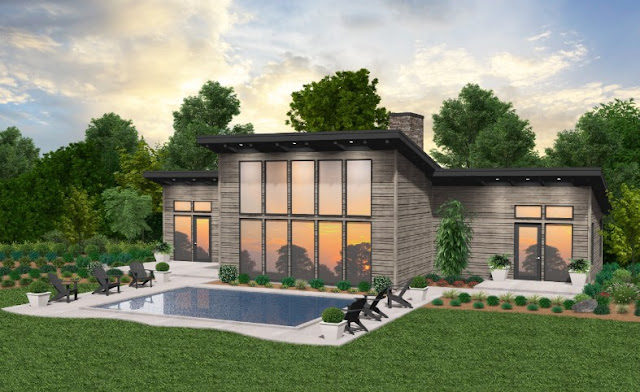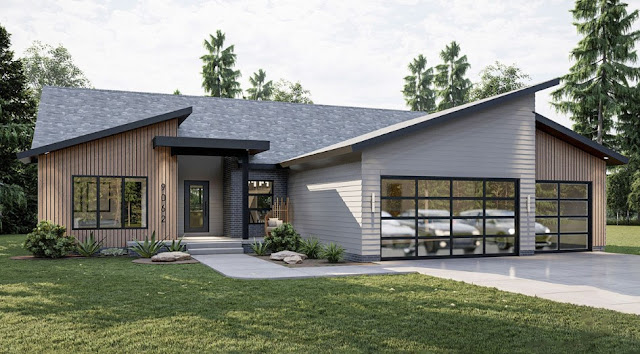In the realm of modern architectural design, one-story contemporary house plans have emerged as a quintessential choice for individuals seeking functional elegance and streamlined living spaces. These innovative designs embody a harmonious blend of sleek aesthetics and practicality, offering homeowners a seamless fusion of style and comfort. Embracing clean lines, open layouts, and a focus on natural light, one-story contemporary house plans cater to the preferences of those envisioning a sophisticated yet uncluttered lifestyle.
With an emphasis on simplicity and functionality, one-story contemporary house plans have become a symbol of modern architectural excellence. These designs prioritize efficient use of space while promoting a sense of spaciousness and connectivity within the home. From minimalist facades to thoughtfully curated interiors, these plans cater to diverse tastes and preferences, fostering a living environment that exudes contemporary charm while accommodating the practical needs of everyday life. Whether embracing a minimalist aesthetic or incorporating eco-friendly elements, these house plans offer a canvas for personalized and stylish living spaces.
Contents
one story contemporary house plans
See also: kitchen table ideas for small kitchens
See also: beautiful one story houses
See also: modern scandinavian house floor plans
See also: small house with loft bedroom plans
See also: simple modern single floor house design
How many stories does a contemporary house have?
Contemporary houses can vary in the number of stories they have. They might be single-story (one level), two-story, or even more, depending on the design, the architect’s vision, the available space, and the preferences of the homeowner. Contemporary architecture often emphasizes clean lines, open spaces, and the integration of indoor and outdoor living areas, irrespective of the number of stories. The focus is on innovative design, functionality, and creating a sense of harmony within the overall structure rather than adhering to a specific number of stories.
What is a contemporary floor plan?
A contemporary floor plan refers to a layout or design of a home that reflects the characteristics and principles of contemporary architecture. It emphasizes open spaces, clean lines, functionality, and a connection between indoor and outdoor areas. Key features of a contemporary floor plan include:
- Open Concept: Contemporary floor plans often have an open layout, where spaces flow seamlessly into one another, creating a sense of spaciousness and connectivity. Walls are minimized, allowing for more natural light and better circulation throughout the home.
- Flexible Use of Space: They prioritize versatile spaces that can be adapted for various purposes. For example, a room might serve as a combination of a living area, dining space, and kitchen, allowing for multifunctional use.
- Emphasis on Natural Light: Large windows, skylights, and glass doors are commonly integrated into contemporary floor plans to maximize natural light, creating a bright and airy atmosphere within the home.
- Minimalist Design: Clean lines, simple geometric shapes, and a minimalist aesthetic characterize contemporary floor plans. They often feature sleek finishes, neutral color palettes, and a focus on essential elements.
- Integration with Outdoor Spaces: Contemporary floor plans often incorporate outdoor living areas like patios, decks, or courtyards, blurring the distinction between indoor and outdoor spaces and allowing for seamless transitions between them.
Overall, contemporary floor plans prioritize functionality, innovation, and a sense of harmony between design elements to create modern, inviting, and comfortable living spaces.
What are the different types of single story homes?
There are several types of single-story homes, each with its own distinct architectural style and layout. Some common types of single-story homes include:
- Ranch Style: Ranch homes, also known as ranchers or ramblers, are characterized by their long, low profile and open floor plans. They typically feature a sprawling layout with a low-pitched roof and a focus on easy indoor-outdoor living. Ranch homes often have attached garages and are popular for their single-level convenience.
- Bungalow: Bungalows are compact single-story homes with a characteristic low-pitched roof and a front porch. They often feature a cozy, cottage-like feel and can have various architectural influences. Bungalows typically have efficient layouts with bedrooms, living spaces, and amenities on a single level.
- Contemporary/Modern Single-Story: Contemporary single-story homes showcase modern architectural designs with clean lines, large windows, and open floor plans. They emphasize simplicity, innovative design elements, and a connection between indoor and outdoor spaces.
- Mediterranean Style: Mediterranean single-story homes draw inspiration from Spanish and Italian architecture. They often feature stucco exteriors, tiled roofs, arched windows, and courtyard spaces. These homes prioritize outdoor living areas and may include intricate detailing and vibrant colors.
- Cottage Style: Cottage-style single-story homes evoke a cozy and charming atmosphere. They usually have steeply pitched roofs, asymmetrical facades, and inviting porches. Cottage homes often emphasize comfort, with quaint details and a warm, welcoming aesthetic.
- Craftsman Style: Craftsman single-story homes are known for their craftsmanship, showcasing handcrafted details, exposed beams, and natural materials. They often have wide front porches, low-pitched roofs with overhanging eaves, and a focus on fine woodworking.
These types of single-story homes vary in architectural features, layouts, and design aesthetics, catering to diverse preferences and lifestyles. Each style offers unique characteristics and appeals to different tastes in residential architecture.
Can I design my own house plans?
Yes, designing your own house plans is definitely possible, although it requires careful consideration, planning, and attention to detail. Here are steps to guide you through the process of designing your own house plans:
- Determine Your Needs and Preferences: Start by listing your requirements and preferences. Consider the number of bedrooms, bathrooms, living spaces, and any specific features or rooms you desire. Think about your lifestyle, future needs, and how you envision using the space.
- Research and Gather Ideas: Explore different architectural styles, layouts, and designs. Collect inspiration from magazines, online resources, architecture books, and home design websites. This will help you define the style and elements you want in your home.
- Sketch Initial Designs: Begin by sketching rough floor plan ideas. Consider the flow of spaces, room sizes, and the overall layout. You can start with simple sketches or use design software to create initial floor plans.
- Consult Professionals: While designing your own house plans, consulting with architects, designers, or experienced professionals can provide valuable insights and guidance. They can help refine your ideas, offer suggestions, and ensure your plans adhere to local building codes and regulations.
- Develop Detailed Plans: Once you have a basic layout, work on creating more detailed plans. Include dimensions, room placements, windows, doors, and other structural elements. Consider the functionality, traffic flow, and practicality of each space.
- Consider Structural and Technical Elements: Pay attention to structural considerations such as load-bearing walls, plumbing, electrical wiring, and HVAC systems. These elements are crucial for the functionality and safety of your home.
- Review and Revise: Review your plans multiple times, seeking feedback from professionals or experienced individuals. Revise and refine your designs as needed to ensure they meet your needs and comply with building codes.
- Finalize Plans and Obtain Permits: Once you’re satisfied with your designs, finalize your house plans. Prepare the necessary documents and seek permits from the local building authority before starting construction.
Designing your own house plans can be a rewarding process, but it’s essential to approach it with careful planning and attention to detail. Seeking professional advice and being mindful of local regulations are crucial steps in creating plans that meet your vision while ensuring structural integrity and compliance with building codes.
Those are some one story contemporary house plans. If it is difficult to design an interior & exterior, you can use the services of an architect for maximum results according to your wishes. In addition, you can look for references to examples of the right house designs for your dream building. Congratulations on designing your dream home!
Check out other designs directly from your cellphone via WhatsApp Channel: https://whatsapp.com/channel/0029VaASACYFXUuYULZWe939.

